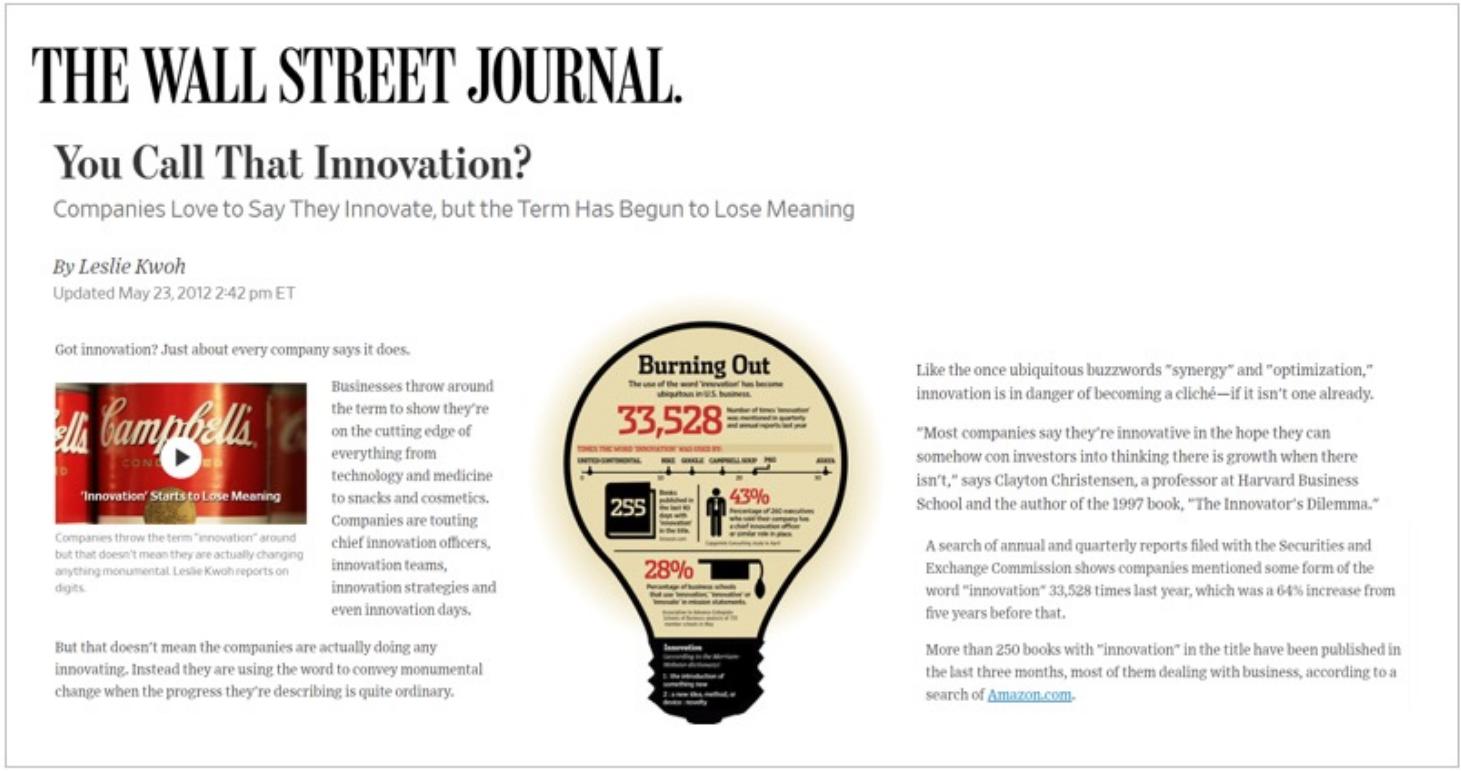Pain Point
Every company in the ▞ tech sector strives to deliver products that qualify as innovative.
Initially, it comes down to company vision, R&D and commercialization. It stands to reason that if a company executes on these three phases, the outside world will perceive the company as innovative.
Unfortunately, that’s not how things play out in the real world.
The Wall Street Journal published a story over 10 years ago called “You Call That Innovation?” calling into the question the dubious claims made by companies of breaking new ground.

While the article addressed all companies, not just the tech sector, the point is still relevant today. Companies continue to overuse the word innovation to describe monumental change when the progress is quite ordinary. As a result, all the varied audiences you care about — journalists, customers, employees, partners, etc. — have become numb to the term.
The challenge is only worse today. Yet, it seems the memo hasn’t reached the communicators. Consider a 20-year look at the use of innovation in news releases:
Telling the world in a news release that you’re innovative has zero impact.
You need to show the world how you’re leapfrogging the status quo so they come to the conclusion on their own “that’s pretty darn impressive.”
Creating Stories That Land
Our approach starts with what we term “discovery.”
This involves sitting down with you to understand the potential areas of genuine game-changing advances. We’ll research these areas. We’ll also rake the media for relevant stories.
Once we agree on the areas to explore, the next step involves getting time with the individuals who played a key role in the advancement, typically R&D managers, scientists, and engineers.
Here, we know how to interview technical professionals to “excavate” the type of information that lifts a narrative.
We’re digging for back stories and anecdotes. We’re teasing out areas that didn’t go according to the plan. We’re exploring the human dimension; when did you feel you had finally overcome the last major obstacle? The details matter.
Armed with the information that comes from “discovery,” we’ll identify opportunities to pursue earned media, a combination of one-off pitches and bylined articles.
Still, earned media alone won’t create the perception of innovation.
An Integrated Approach to Lifting Your Innovation Story
As you saw on the Pain Points page, we’ll leverage owned media and paid media as well as earned media to extend the reach of this story.
We’ll use your social channels, your blog (if one exists) and paid media to amplify coverage landed in publications. We’ll also package content and imagery specifically for owned and paid media channels to ensure a consistent cadence of outbound communications.
Do the LinkedIn profiles of your inventors reinforce the innovation story?
Do we ghost write mini posts (< 200 words) for specific engineers/scientists to publish on their LinkedIn feeds?
If we write mini posts for LinkedIn, do we extend the reach with sponsored/paid content?
How can content underpinning the innovation story be repurposed for your website?
The point is, every touch point is an opportunity to make an impression.
By harmonizing all channels, your innovation story gains traction.
If you’re interested in discussing a potential campaign to amplify your innovation story, let us know.